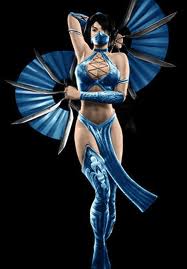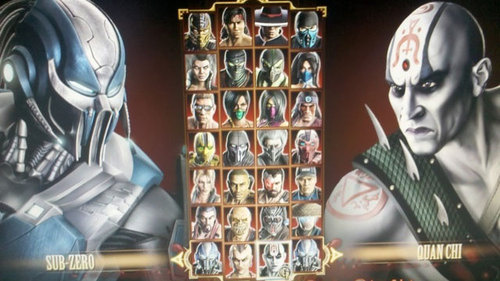The Mortal Kombat series occupies a curious place in the one-to-one fighting game genre. Indeed, it has often been seen as the red-headed stepchild of fighting. It does not fit in with the 2-D sensibilities of Capcom or SNK, nor does it mesh with the 3-D styles of Sega or Namco. Its fans love its over-the-top style and hyperactive juggling combos, its detractors hate it for its supposed imprecision and cheesy American action-movie aesthetic. Part of this is because in a genre otherwise ruled by Japanese publishers, Mortal Kombat remains America’s only truly successful home-grown fighting game franchise, aside from mostly forgotten one-off games like Killer Instinct and Primal Rage.

Though the series has never fallen to the level of obscurity that the now resurgent Street Fighter franchise did during the Tekken-dominated PS1 and PS2 eras, it has never recaptured the glory days of its most successful entry, Mortal Kombat II, and the flaws of its later 3-D entries – stiff animations, spotty hit detection – were all the more glaring compared to Virtua Fighter, Soulcalibur, and more recently, Street Fighter IV. Though MK vs. DC Universe, the franchise’s answer to Marvel vs. Capcom, was quite successful, it wasn’t enough to save legacy arcade publisher Midway from liquidation. As required by DC Comics and its parent, Time Warner, the violence in MK vs. DCU was toned down considerably in order to avoid tarnishing DC heroes like Superman and Batman. However, MK vs DC Universe arguably saved the Mortal Kombat franchise from extinction, because Warner bought the Mortal Kombat IP when Midway collapsed. This re-imagining of the iconic fighting game series is the first Mortal Kombat produced by Warner Bros. and NetherRealm Studios, the Chicago-based development studio headed by Mortal Kombat co-creator Ed Boon.
From the beginning, Mr. Boon and his crew set out to bring Mortal Kombat back to the roots that made it one of the biggest franchises of the mid-90’s. As a die-hard Mortal Kombat fan since the franchise’s earliest days, I can say that this reboot of the franchise, simply known as Mortal Kombat, is one of the most sublime fighting experiences I’ve seen in a long time.
Much like Street Fighter IV, Mortal Kombat is more or less of a souped-up remake of the mid-90’s games, which were the most successful games for both franchises. Mortal Kombat is a 2.5-D fighting game, meaning it is a 2-D fighter with 3-D rendered graphics. As seen in Mortal Kombat’s story mode, with the defeat of the Earth Realm at the hands of Shao Kahn imminent, Raiden, the god of thunder, reverses the flow of time back to the time of MK 1 and 2 in order for the Earth Realm heroes and the Elder Gods to prevent the events that led to Shao Kahn claiming victory over the Earth Realm. MK 2011’s roster includes all of the series’ most iconic fighters – Sub-Zero, Scorpion, Liu Kang, Kitana, Mileena, Sonya, and countless others. There are over 28 fighters, with more planned as DLC. The PS3 version also includes Kratos, the hero of Sony’s God of War series; the 360 version has no exclusive fighters.
Netherrealm Studios really listened to fan feedback with regards to the Mortal Kombat fighting engine, and they gave it a full overhaul. The controls are very responsive, moreso than even SFIV and MvC3, and the hit detection is razor sharp. Netherrealm added aspects of Capcom’s tried-and-true combo system into MK, allowing you to pull off some spectacular two-in-one combos without the “dial-a-combo” feeling that plagued the series after MKII. But the free-form aerial combo system that set Mortal Kombat apart from Japanese fighters in the 90’s has finally returned to the series. I was delighted to see that Kitana’s aerial fan combos worked just as well in the HD MK as they did in MKII, and with the benefit of more precision control. Shang Tsung fans will also be happy to learn that the demonic sorceror has had his famous shapeshifting ability restored. For many years, the designers were not able to implement Shang Tsung’s shapeshifting into the game due to the limitations of optical disc-based game consoles and the game engine. The playable Shang Tsung can unfortunately only take the form of his opponent, while a CPU-controlled ST can morph into anyone. But still, it is impressive to see Shang Tsung in action after so many years.
No other fighting game has nearly the plethora of content that MK does. In addition to the standard arcade and online 1:1 modes, there are also tag-team modes. MK features some of the best tag-team fighting I’ve ever seen in a fighting game, allowing characters to complement each other without the assist-spamming that plagues the Capcom vs. games. There are also extensive training modes, including a fatality trainer; the Krypt, where you can spend MK koins earned during matches on secret unlockables including new game modes and character art and bios, the Challenge Tower, which is similar to the missions modes of other fighters. The story mode is very impressive. In contrast to the visual novel styles used in other fighting games, the story mode features fully animated 3-D sequences that tell the story of the heroes and villains of Mortal Kombat. Mortal Kombat not only has more content than any other fighter I’ve seen, but it has a level of content that rivals most action-adventure games. You definitely won’t feel shortchanged by MK. One of the big online modes is King of the Hill, where spectators can interact with the players in the match, using in-game avatars on PS3 or their Xbox Live avatars on 360.
http://www.youtube.com/watch?v=Hc4LOzB64JY
The visuals are a huge step up from previous MK games. Like MK vs. DCU, MK ’11 is built on Epic’s Unreal Engine 3. However, the character models are a lot sharper and more fluidly animated than in MK vs. DCU. One of MK 2011’s main goals was to bring back to the MK series the same level of gratuitous gore that earned MK hearings in front of Congress in the 1990’s. Characters show bruises, cuts, and profuse bleeding from getting hit, and blood spatters everywhere. MK takes advantage of the Unreal Engine’s ability to render sharp, detailed backgrounds by placing players in a variety of arenas ranging from classics like the Pit, the Shaolin arena, to venues like a waterfall of blood, which drenches the fighters in blood if they walk through it. The fatalities are far and away the most gruesome the series has ever seen. Heads and limbs are severed, faces are eaten by the fangs of the Tarkatan, and bodies explode. Among the most unique features of MK are the X-ray Combos. When a character’s super gauge fills up, he/she has the chance to execute an attack sequence that, in slow motion, will show cutaway views of the character’s bones and internal organs being pulverized by attacks. Some of the X-ray Combos are more gruesome than the fatalities. Mortal Kombat 2011 more than earns the ESRB M rating that the first two MK games helped create nearly two decades ago. As others have noted, MK’s characters have a 90’s sensibility to them, something which I feel is a positive rather than a negative. Mortal Kombat’s visuals overall are very close to the level of Namco’s fighting games, with the only complaint I have being the rather bizarre poses of the characters on the Versus screens, which make the characters look ridiculous rather than aggressive. The PS3 version supports stereoscopic 3-D for those who have 3-D capable TV sets.
Even as big of a Mortal Kombat fan as I was in the 90’s, I would never have believed that here in the year 2011 I would be this excited about a new entry in the venerable fighting franchise, and with a caveat for parents to take its M rating seriously, I cannot recommend Mortal Kombat highly enough. It is not just a good MK game for fans, or a great fighting game. Mortal Kombat is a great game, period.
Flawless victory, NetherRealm studios.



Great game and even better review keep up the good work guys.
Best MK game I’ve ever played. I even forgot about MVC3. I hope they retain Kratos for the next MK installment =D
I agree completely. This MK is a sublime fighting experience. Kudos to you for this well written review.
one word after watching you play. EEEEWWWWW!!! This game is GROSS! You are a gaming god though. hehehehe.
Ed struck me as genuine. Glad he and Nether-realm studios gave 110% on this!